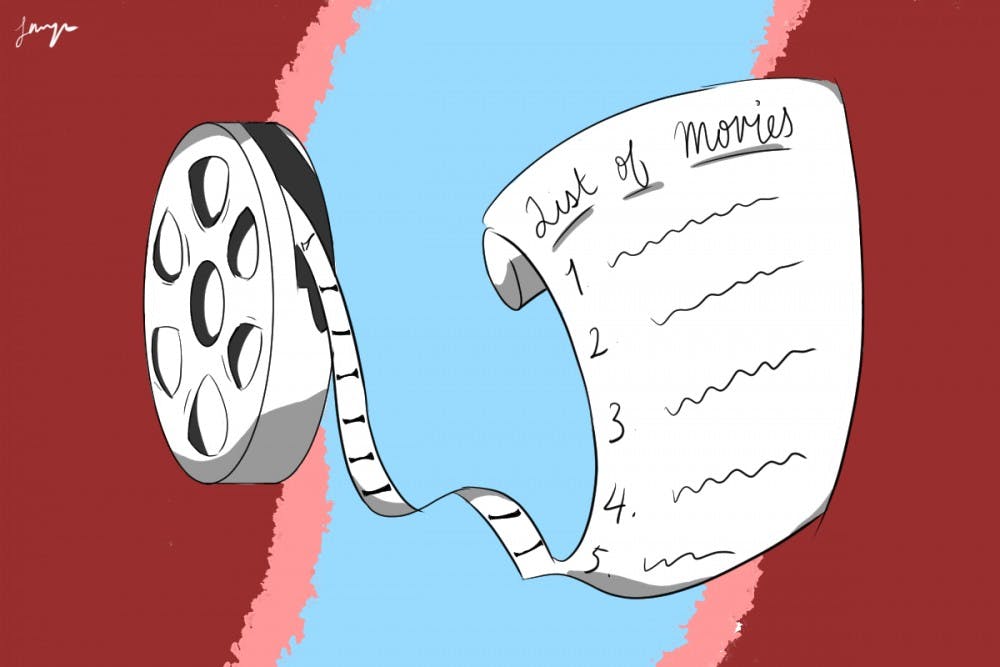A structured approach is how non–runners become marathon finishers, how students bump their Bs up to As, and how I hope to become a more informed appreciator of the cinematic arts over the next few years. The truth is, for someone who declares her love for film with seemingly every opportunity, I haven’t seen all that many movies. What’s particularly concerning is the number of must–see classic films that remain, in my mind, nothing more than titles with attached merit. As much as I love writing about up–and–coming movies and television that interest me in the present, I couldn’t help but wonder what can be done about all those I haven’t seen. Thus, naturally, I took to the internet for a solution.
Following the recommendation of a friend with a taste for high–quality cinema, I first turn to the IMDb Top 250. This checklist is often regarded as a sufficiently comprehensive list of must–see films, although it is not without its drawbacks. Because the list is ordered based on user rankings, critically acclaimed but commercially unsuccessful films are at a disadvantage—and most featured foreign films tend to be from countries with massive industries, like India. What is more, watching all 250 films could amount to several years of commitment—I can already imagine myself at the close of every week scrambling to check off another film from such an expansive list. An advantage of IMDb’s Top 250 is how diverse the films are in genre and release date—2008’s The Dark Night is ranked at number 4, right next to 1957’s 12 Angry Men at number 5. How incredible would it be to watch these two masterpieces back to back and see how 50 years of cinema transformed the art of filmmaking?
A more approachable alternative is The Guardian’s Top 100 Films, which encompasses the classics in their purest form—the kind of movies that are talked about in other movies. Unsurprisingly, films like Jaws, Psycho, and Citizen Kane make the cut. Every name rings a bell, but the only one I’ve seen in full is The Matrix (which I have to admit is a must–see, even if only to make sense of the endless cultural references it has spurred).
Then, there is the somewhat terrifying 1001 Movies to See Before You Die, which includes a hefty load of films from the 20s, 30s, and 40s. I’ll pass, given that I don’t possess the ambition necessary to make a lifelong commitment to a list on the internet. BBC has produced several compelling lists in the last few years including the 21st Century’s 100 Greatest Films and the 100 Greatest American Films of all time, both of which used critics as guides in curation. Although the list of American films is evidently lacking in foreign cinema, it could be a good place to start for someone seeking exposure to the continuity of film within a limited geographical area. I find the inclusion of 12 Years a Slave in both lists quite a relief, since, even with a Oscar for Best Picture, I feel that the film ought to have more recognition as a staple of contemporary American cinema.
The starting point of all lists is still, however, theoretical—and for someone who’s barely dipped their toes into the vast world of film, it can all be a bit overwhelming. Still, I have a goal in mind and, as my high school track coach used to say, it is only possible to reach that goal by setting action steps. Perhaps I should take a sample of the IMDb Top 250, or better yet, look at the overlap from list to list and select a 25–film trial run to start. At the end of the day, the arrangement of movies that a person or algorithm created on the internet is the most trivial part of completing a film bucket list. What matters to me, and what I believe should matter to more people, is the opportunity it provides for one to step out of the contemporary bubble of media we sometimes find ourselves trapped in. Platforms like Netflix and YouTube, which have their place, offer so much content to keep on top of—it’s exhausting. Looking back at what got us here is what I seek to do.
Not everyone likes movies. Some people claim they don’t have the patience for them. Others have a hard time suspending their disbelief for two hours and become compulsive nitpickers. However, it feels wrong for me to tote around my love for film without recognizing its scope across time and place. So, for that reason, I will let popular belief (and internet lists) guide me toward that goal of deeper film literacy—perhaps starting at number 250.

